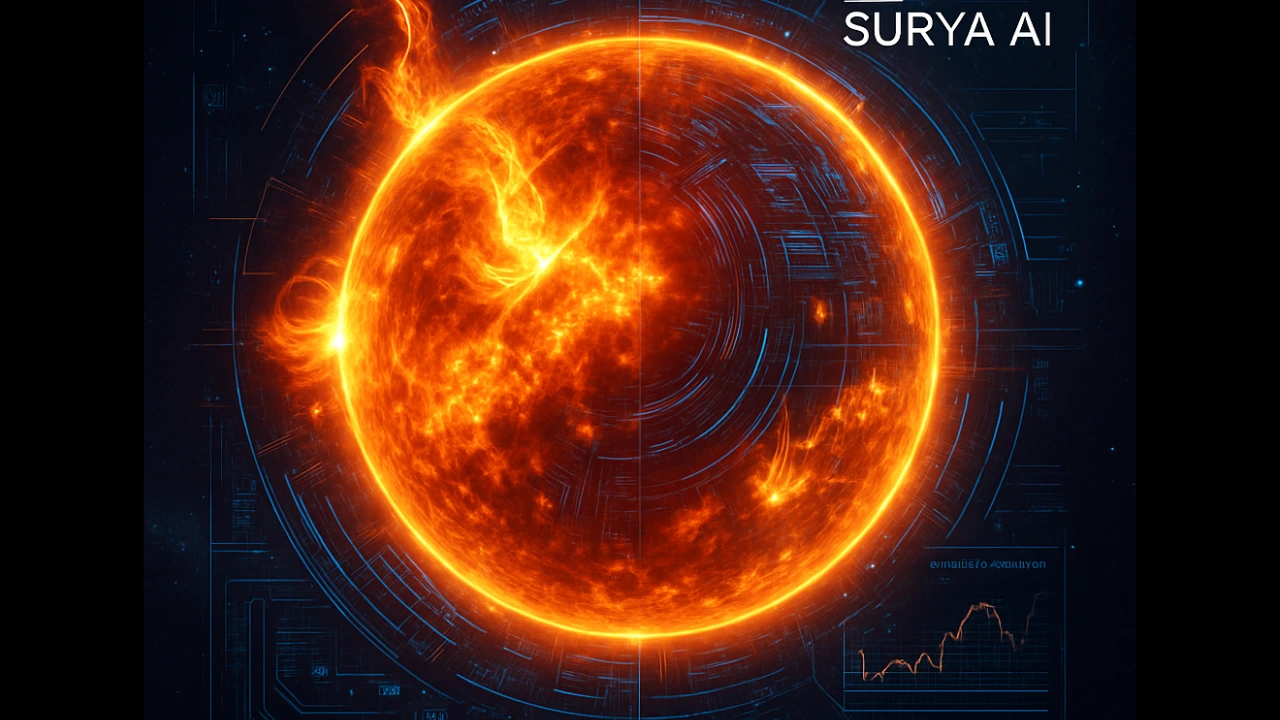NASA, in collaboration with IBM and leading research institutions, has launched Surya, a groundbreaking artificial intelligence (AI) model designed to improve the accuracy and timing of solar storm predictions. Trained on over nine years of continuous solar data collected by NASA’s Solar Dynamics Observatory (SDO), Surya is poised to transform how scientists monitor and forecast solar activity, protecting vital technology and infrastructure on Earth.
What is Surya?
Surya, named after the Sanskrit word for “sun,” is an advanced heliophysics AI model that analyzes vast datasets of solar imaging and magnetic measurements. Unlike previous methods, Surya uses a foundation model architecture to learn directly from raw solar data without requiring extensive labeling. This allows the AI to detect subtle patterns and predict major solar events such as solar flares and coronal mass ejections up to two hours in advance with 15-16% improved accuracy compared to existing forecasting techniques.
Why Surya Matters for Space Weather Prediction
Solar storms can cause significant disruptions on Earth, affecting satellite communications, GPS navigation, power grids, and aviation. Extreme solar eruptions can lead to geomagnetic storms that overload electrical infrastructure and radiation risks to astronauts and high-altitude flights. With Surya’s enhanced predictive capabilities, NASA aims to provide earlier warnings to satellite operators and critical infrastructure managers, reducing the risks posed by space weather.
How Surya Works
Surya was developed using the unique 15-year dataset from SDO, which captures high-resolution solar images every 12 seconds in multiple wavelengths along with detailed magnetic field measurements. This long-term, high-quality data enables Surya to recognize evolving solar dynamics that shorter datasets miss. The AI integrates solar flare activity forecasting, solar wind speed prediction, and ultraviolet radiation monitoring, making it a comprehensive tool for space weather research.
Open Access to Boost Innovation
NASA has made Surya’s AI model and training code publicly available on HuggingFace and GitHub, encouraging researchers and developers worldwide to utilize and improve the model. This open-source approach aims to accelerate advances in solar science and operational space weather forecasting.
A New Era of AI in Heliophysics
NASA’s Chief Science Data Officer, Kevin Murphy, states, “By embedding NASA’s deep scientific expertise into cutting-edge AI models, we are making it easier to analyze the complexities of the Sun’s behavior with unprecedented speed and precision.” Supported by initiatives like the National Artificial Intelligence Research Resource (NAIRR) and powered by high-performance computing from partners such as NVIDIA, Surya epitomizes the fusion of AI and space science to safeguard technology-dependent societies.
With Surya, NASA is pioneering a new frontier in solar observation and space weather prediction, offering critical lead times to mitigate the impacts of solar storms on Earth’s technology and future space missions.
Here are some MCQs related to NASA’s Surya AI, for job competitive examinations:
Multiple Choice Questions (MCQs) on NASA’s Surya AI
- What is Surya AI?
A) A new satellite launched by NASA
B) An advanced artificial intelligence model for solar storm prediction
C) A NASA space exploration mission to the Sun
D) A new solar telescope
Answer: B) An advanced artificial intelligence model for solar storm prediction - Which organization collaborated with NASA to develop Surya?
A) Google
B) IBM
C) SpaceX
D) Microsoft
Answer: B) IBM - What type of data was Surya trained on?
A) Data from Mars missions
B) Weather data from Earth
C) Solar data from NASA’s Solar Dynamics Observatory (SDO)
D) Oceanographic data
Answer: C) Solar data from NASA’s Solar Dynamics Observatory (SDO) - What is the main purpose of Surya AI?
A) To study the surface of Mars
B) To predict solar flares and space weather events
C) To launch rockets into space
D) To map the Moon’s surface
Answer: B) To predict solar flares and space weather events - How far in advance can Surya predict solar flares?
A) 10 seconds
B) 30 minutes
C) Up to 2 hours
D) 24 hours
Answer: C) Up to 2 hours - Which of the following is NOT an impact of solar storms that Surya aims to help mitigate?
A) Disruption of GPS navigation
B) Damage to power grids
C) Interference with aviation communication
D) Earthquake prediction
Answer: D) Earthquake prediction - What architecture does Surya use to analyze the Sun’s complex data?
A) Simple linear regression
B) Traditional neural networks
C) Spatiotemporal transformers with spectral gating
D) Blockchain technology
Answer: C) Spatiotemporal transformers with spectral gating - Where has NASA made the Surya model available for global research collaboration?
A) Only on NASA’s internal servers
B) On GitHub and HuggingFace as open-source
C) Through paid subscription services
D) Only to government agencies
Answer: B) On GitHub and HuggingFace as open-source
Conclusion
NASA’s launch of Surya, an advanced artificial intelligence model developed in partnership with IBM, marks a breakthrough in solar storm prediction and space weather forecasting. Trained on over nine years of high-resolution data from NASA’s Solar Dynamics Observatory (SDO), Surya uses cutting-edge AI and machine learning techniques to predict dangerous solar flares and eruptions up to two hours in advance. These predictions help protect satellites, power grids, GPS navigation, and aviation systems from the disruptive effects of solar activity. By offering an open-source AI model available globally on platforms like GitHub and HuggingFace, NASA encourages international collaboration to strengthen space weather resilience and advance heliophysics research. Surya’s innovative use of spatiotemporal transformers and its improved forecast accuracy represent a new era in protecting Earth’s technology infrastructure and supporting future space missions.

